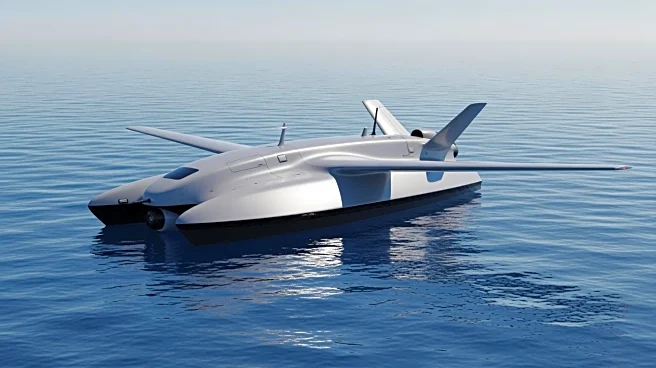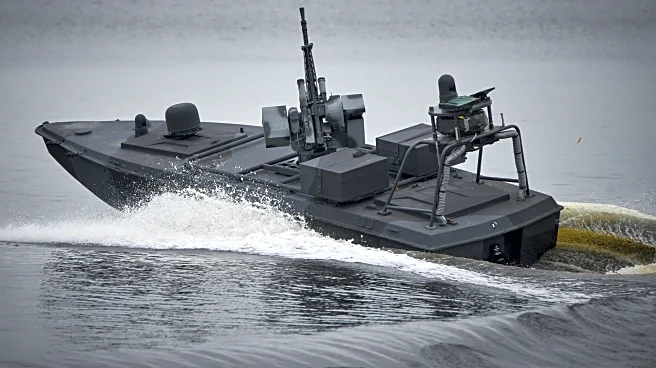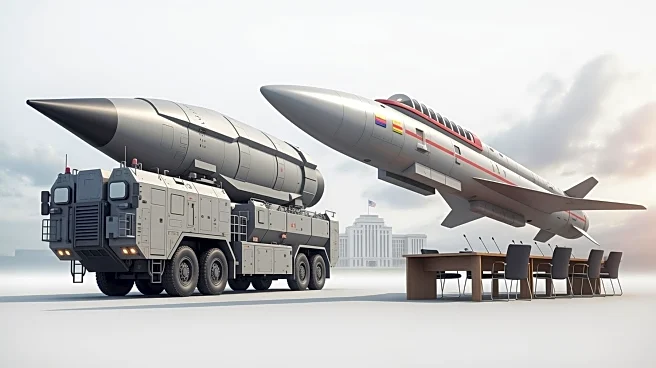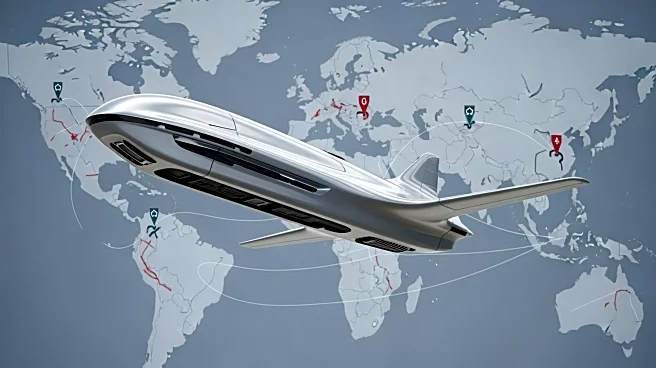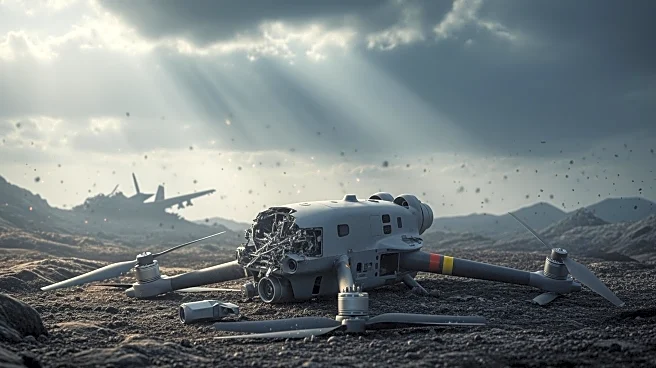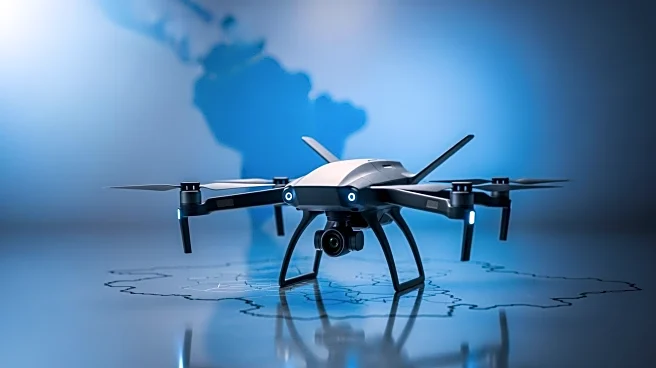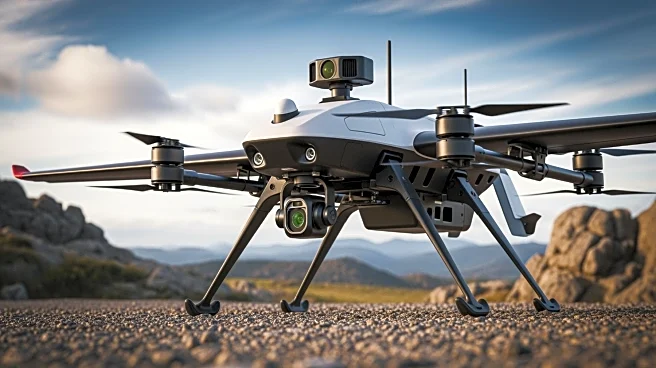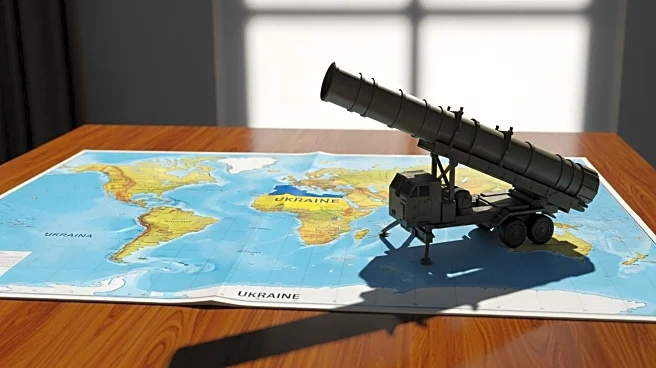What's Happening?
Ukraine's state security service, known as the SBU, has introduced an upgraded sea drone, the 'Sea Baby,' which is now capable of operating throughout the Black Sea. This unmanned naval drone has been
instrumental in targeting Russian shipping and infrastructure, prompting a strategic shift in Russia's naval operations. The Sea Baby's range has been extended to 1,500 kilometers, and it can carry a payload of up to 2,000 kilograms. The drone is equipped with AI-assisted targeting systems and can launch aerial attack drones, enhancing its operational capabilities. The SBU has credited these drones with successful attacks on 11 Russian vessels, leading to the relocation of Russia's main naval base from Sevastopol to Novorossiysk.
Why It's Important?
The introduction of advanced sea drones by Ukraine represents a significant development in asymmetric naval warfare. These drones have forced Russia to alter its naval strategy, showcasing the effectiveness of unmanned systems in modern conflict. The ability to carry heavier weaponry and operate over extended ranges enhances Ukraine's offensive capabilities, potentially altering the balance of power in the region. The use of AI in targeting systems further underscores the growing role of technology in warfare, with implications for future military engagements. This development also highlights the strategic importance of the Black Sea in the ongoing conflict between Ukraine and Russia.
What's Next?
The continued evolution of Ukraine's sea drone program may lead to further advancements in naval warfare technology. As these drones become more sophisticated, they could play a larger role in Ukraine's military strategy, potentially influencing other nations to adopt similar technologies. The strategic relocation of Russia's naval base suggests ongoing adjustments in response to these threats, which may lead to increased tensions in the region. Additionally, the integration of AI and advanced weaponry into these drones could prompt discussions on international regulations and ethical considerations surrounding autonomous military systems.
Beyond the Headlines
The use of drones in naval warfare raises ethical and legal questions about the deployment of autonomous systems in conflict zones. As these technologies become more prevalent, there may be calls for international agreements to govern their use and prevent potential abuses. The reliance on public donations to fund the Sea Baby program also highlights the role of civilian support in military initiatives, reflecting broader societal engagement in national defense efforts. This development may influence other countries to explore similar funding models for military innovation.
